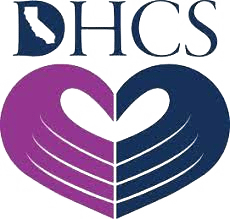Alcohol addiction manifests in various ways, both physically and behaviorally, with some signs being less obvious than others. One of the more subtle physical indicators is the so-called “alcoholic face,” a term used colloquially to describe specific changes in facial appearance due to prolonged and excessive alcohol consumption. These changes are not purely cosmetic; they can also signify underlying health issues related to alcohol abuse. Understanding what an alcoholic face looks like and recognizing its signs are vital for early intervention and effective treatment.
The alcoholic face typically exhibits several distinctive features, including persistent facial redness, especially on the cheeks and nose, due to the dilation of blood vessels. This redness is a visible result of the complex effects alcohol has on cardiovascular health, affecting vascular functions and contributing to conditions such as hypertension and peripheral arterial disease. Over time, this can lead to permanent redness as the vessels lose their ability to constrict. Puffiness around the eyes and other parts of the face can also occur, stemming from alcohol’s dehydrating effects and its impact on the body’s ability to regulate fluids. In more severe cases, spider angiomas or small, spider-like veins might appear, signaling liver damage from alcohol overuse. Understanding these signs, combined with behavioral indicators of alcohol abuse, can help in identifying individuals who might need help, facilitating timely and appropriate support.
Understanding the Alcoholic Face
The term “alcoholic face” refers to distinct facial changes that often develop over time in individuals who consume excessive amounts of alcohol. These changes are not merely superficial; they can signify serious underlying health issues related to prolonged alcohol abuse. Recognizing these features is important as they can serve as early indicators of more severe health complications. Here are the key features typically associated with an alcoholic face:
Facial Redness and Flushing
One of the most noticeable signs of an alcoholic face is persistent redness, particularly in the cheeks and nose. This symptom occurs because alcohol temporarily dilates blood vessels. With continued alcohol use, these vessels may permanently lose their ability to contract, leading to a chronic flushed appearance. According to research, chronic alcohol consumption leads to vascular effects that can be seen in the skin, evidencing how alcohol misuse can physically alter appearance.
Puffiness and Swelling
Alcohol’s dehydrating effects can cause the body to retain water, leading to noticeable swelling or puffiness, especially around the eyes. This puffiness is often exacerbated by nutritional deficiencies and liver issues, which are common among heavy drinkers. Among individuals with problematic drinking habits, approximately 35 percent develop advanced liver disease, which can contribute significantly to systemic symptoms like edema. This statistic underscores the severe impact of alcohol on organ systems and highlights the progressive nature of alcoholic liver disease.
Spider Angiomas
These small, spider-like veins can appear on the face and other parts of the body and are symptomatic of liver damage due to alcohol abuse. Increased estrogen levels cause them due to liver dysfunction, which fails to metabolize the hormone effectively. Research suggests that spider angiomas are found in patients with alcoholic liver disease, making it a common and telltale sign.
Paleness or Jaundice
Paleness can indicate anemia, a common condition in alcoholics resulting from poor dietary habits and nutrient absorption. More alarmingly, a yellowing of the skin or the whites of the eyes, known as jaundice, indicates severe liver damage. Jaundice occurs when the liver cannot adequately process bilirubin, a byproduct of old blood cells. This is a serious condition that requires immediate medical attention.
Understanding these facial signs associated with alcohol abuse is crucial for early diagnosis and intervention, which can potentially prevent the progression of more severe health issues. Recognizing an alcoholic face can thus be a critical step in encouraging individuals to seek help and possibly reverse the adverse effects of alcohol.
Causes Behind the Alcoholic Face
The changes in appearance commonly referred to as the “alcoholic face” are influenced by a complex interplay of factors resulting from both direct and indirect effects of alcohol on the body. These changes are more than skin deep, often indicating more systemic health issues. Understanding these factors is crucial for comprehending how alcohol affects not just the liver but also the skin and overall health.
Vascular Effects
One of the most immediate effects of alcohol is its impact on the vascular system. Alcohol consumption leads to the dilation of blood vessels, a phenomenon known as vasodilation. This process is responsible for the characteristic facial redness seen in many heavy drinkers. Over time, repeated vasodilation can cause the blood vessels to lose their ability to contract back to their normal size, leading to permanent facial redness and the development of spider angiomas. These spider angiomas are star-shaped blood vessels that appear just beneath the skin’s surface and are particularly common on the face and chest.
Dehydration
Alcohol’s property as a diuretic means that it promotes urine production, leading to increased urination. This process can quickly lead to dehydration, affecting the skin’s ability to retain moisture. Dehydrated skin often appears dry and can feel excessively tight and uncomfortable, contributing to a puffy appearance. This puffiness is especially noticeable around sensitive areas such as the eyes.
Nutritional Deficiencies
Heavy alcohol consumption is frequently associated with poor nutrition. Alcoholics often replace meals with drinks, leading to significant deficiencies in vital nutrients, vitamins, and minerals necessary for maintaining healthy skin. For example, deficiencies in vitamins A and C can severely impair the skin’s ability to repair itself and maintain collagen and keratin. These vital structural proteins keep the skin firm and elastic. Additionally, zinc deficiency, common in alcoholics, can lead to skin inflammation and aggravate the appearance of an alcoholic face.
Liver Damage
Chronic alcohol use places a tremendous burden on the liver, the organ primarily responsible for metabolizing and detoxifying alcohol. The liver also plays a crucial role in regulating various substances in the blood that affect skin health. When the liver is damaged, it struggles to process toxins and byproducts from the breakdown of fats, which can accumulate in the body and affect the skin’s appearance. This can lead to jaundice, where the skin and eyes turn yellow due to the buildup of bilirubin, and other skin issues like increased bruising, which happens due to the liver’s reduced ability to produce clotting factors.
Hormonal Imbalances
Alcohol can disrupt the delicate balance of hormones in the body, including those that regulate skin health. For instance, it can increase the levels of estrogens, leading to water retention and contributing to the swollen look of the face. Additionally, alcohol-induced hormonal imbalances can exacerbate skin conditions such as acne and psoriasis, making the alcoholic face more pronounced.
Immune System Impact
Alcohol can weaken the immune system, reducing the body’s ability to fight off infections that can affect the skin. This immunosuppressive effect can exacerbate the appearance of the skin, leading to infections, poor wound healing, and a generally unhealthy appearance.
How to Spot an Alcoholic Face
Recognizing an alcoholic face involves identifying distinct facial features that are significantly different from those caused by normal aging or other medical conditions. Being able to spot these signs is not only crucial for early intervention but also helps in understanding the broader implications of chronic alcohol use. Here’s a more detailed guide on what to look for:
Look for Persistent Redness
One of the hallmark signs of an alcoholic face is persistent redness, especially evident on the cheeks and nose. This isn’t the typical flush that might appear briefly after consuming a drink; it’s a constant, pronounced redness that does not fade. It occurs due to the dilation of capillaries, which, with continuous alcohol exposure, may become damaged and fail to constrict back to their normal size. Over time, this can lead to a condition known as telangiectasia, where these tiny blood vessels cause threadlike red lines or patterns on the skin.
Notice the Skin Texture
Alcohol affects skin texture profoundly; it can make the skin look dull, lifeless, and dehydrated. With prolonged abuse, the skin might not only lose its natural luster but also become thick and waxy. This change is often due to the buildup of toxins that the damaged liver cannot process effectively, affecting skin health directly. Additionally, alcohol’s dehydrating effects sap the skin of moisture, leading to a rough and uneven texture.
Check for Additional Signs
Beyond the immediate appearance of the face, there are other physical indicators of chronic alcohol abuse. These include unexplained bruises, which may appear due to alcohol’s role in thinning the blood and reducing clotting capabilities. Alcohol-induced coordination issues can also lead to falls and injuries, resulting in more frequent bruising. Additionally, observe for signs of tremors or shaking hands, which are common due to the neurological impact of excessive alcohol consumption. Poor personal hygiene can also be a telling sign, as it may indicate a broader neglect of self-care, often associated with addiction.
Examine Eye Appearance
Particular attention should be paid to the eyes. Individuals with chronic alcohol use may exhibit puffiness around the lower eyelids and a slight yellow tint in the whites of the eyes, indicative of jaundice from liver damage. Moreover, the look of the eyes can often be bloodshot, adding to the visual cues of alcohol abuse.
Consider the Context
While the physical signs are important, they should always be considered within a broader context. These signs alone do not confirm alcohol addiction; behavioral cues are equally telling. Changes in behavior, such as irritability, frequent intoxication, neglect of responsibilities, and withdrawal from social activities, can all support the physical observations. Consider the cumulative evidence rather than a single symptom to make a more accurate assessment.
For those experiencing such effects, recognizing patterns of alcohol misuse and understanding aspects like how long does it take to sober up can be important steps toward making informed decisions about their health and seeking help when needed. Addressing these concerns early can be critical to overall recovery and well-being.
Addressing the Issue
If you suspect someone has an alcoholic face and is struggling with addiction, approaching the topic sensitively is crucial. Encourage them to seek professional help from outpatient addiction treatment centers like Tres Vistas Recovery, which offer comprehensive programs tailored to individual needs. Early intervention can prevent further health complications and assist in a successful recovery. Understanding how to help an alcoholic can empower you to offer the support they need on their journey toward recovery.
Alcohol Addiction Treatment at Tres Vistas Recovery
Recognizing an alcoholic face can be a step toward getting help for someone dealing with alcohol addiction. By understanding the signs and underlying causes, friends, family, and colleagues can play a vital role in supporting individuals in their journey towards recovery. Additionally, being aware of the interactions between substances like ambien and alcohol can further enhance supportive measures, as mixing medications with alcohol can exacerbate health issues and complicate recovery processes. Remember, alcoholism is a treatable condition, and with the right support and treatment, individuals can regain a healthy and fulfilling life.











